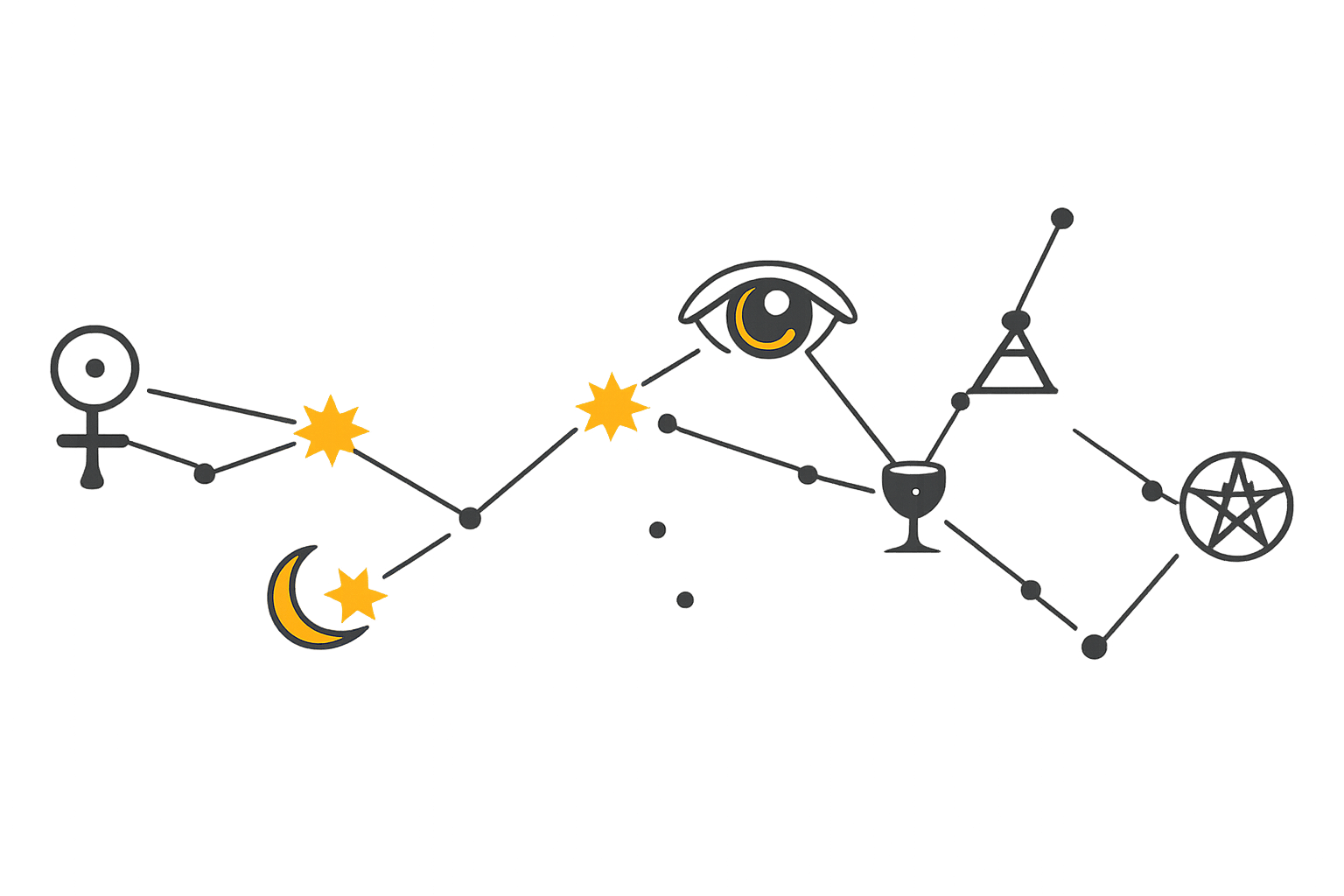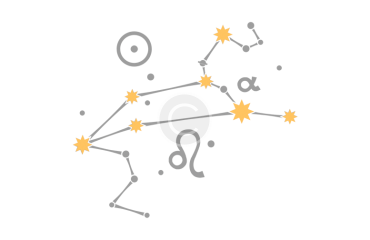THE DIGITAL COVEN
A Living Practice • A Sacred Rhythm • A Place to Belong
Occult World – Making the Invisible Visible (since 2003)
The Digital Coven is not a course.
It is not a social group.
It is not a trend.
It is a living, guided practice for those who feel the pull of the unseen and wish to walk the path with clarity, integrity, and depth.
This coven exists for witches, seekers, and practitioners who value:
- Knowledge over fantasy
- Practice over performance
- Depth over Spectacle
🔮 WHAT IS THE DIGITAL COVEN?
The Digital Coven is a private, members-only space within Occult World where practice unfolds day by day, season by season. As a member, you gain access to:- 🌙 The Daily Path Daily texts aligned with lunar phases, energetic cycles, and inner work — grounding magic in everyday life.
- 🕯 The Ritual Chamber Guided rituals, workings, and ceremonial practices you can perform at your own pace.
- 🌑 The Shadow Room Safe, honest exploration of shadow work, inner transformation, and the deeper layers of the self.
- 📖 The Book of Shadows A growing collection of teachings, practices, reflections, and coven wisdom.
- 🌿 Elemental Work Foundational earth, air, fire, and water practices — the roots of real witchcraft.
- 🚪 The Threshold Guidance for those still finding their footing, ensuring no one is left overwhelmed or excluded.
🜂 WHO THIS COVEN IS FOR
The Digital Coven is for you if you:- feel called to witchcraft as a path, not a phase
- want structure without dogma
- value privacy and seriousness
- prefer depth over decoration
- seek continuity and rhythm rather than one-off spells
- instant results seekers
- fear-based spirituality
- sensationalism
- performative witchcraft
🌘 MEMBERSHIP TIERS
Choose the commitment that matches your path.🌑 ONE YEAR — INITIATE
For those stepping onto the path ✔ Full access to the Digital Coven ✔ Daily Path texts ✔ Ritual Chamber & Shadow Room ✔ Book of Shadows & Elemental Work A full year allows you to experience the complete rhythm of practice — moon cycles, seasons, and inner transformation. Ideal if you want to begin without pressure.🌒 TWO YEARS — ADEPT
For those ready to deepen ✔ Everything in the One Year tier ✔ Extended continuity & deeper integration ✔ Space to truly live the practice Two years allow the work to settle, mature, and take root beyond novelty. Recommended for serious practitioners.🌕 LIFETIME — COVEN KEEPER
For those who know this is home ✔ Lifetime access to the Digital Coven ✔ All future expansions included ✔ No renewals, no interruptions This is a declaration of commitment — not to a platform, but to a path. One choice. One home. One ongoing practice.🔥 WHY JOIN NOW?
The Digital Coven grows slowly and intentionally. It is not designed for mass membership. Joining now means:-
-
-
- entering at the foundation
- growing alongside the coven
- being part of its living lineage
-
-
🌙 FINAL WORD
Magic does not shout. It does not rush. It does not beg to be seen. It waits for those who are ready. Enter the Digital Coven. Walk the path — steadily, honestly, and together.FAQ
Most frequent questions and answers
Yes — if you are sincere.
The Digital Coven welcomes beginners who feel genuinely called to witchcraft as a practice, not as entertainment. The Threshold space exists specifically to guide those who are still finding their footing, ensuring no one is overwhelmed or left behind. What matters is seriousness, not prior knowledge.
Yes and no.
The Digital Coven includes structured teachings and guided material that can be approached as a course if you wish. These teachings are there to provide orientation, depth, and continuity for those who value structure.
However, the Digital Coven is not limited to a course, nor does it require you to follow a fixed curriculum. There are no deadlines, no grades, and no obligation to move at a prescribed pace. The practice unfolds gradually through daily texts, rituals, and seasonal work, allowing each member to engage with the material in a way that fits their rhythm and stage of practice.
Structure is offered — not imposed.
No dogma is imposed.
The Digital Coven honours traditional foundations while respecting personal sovereignty. You are not required to adopt a specific religious structure, pantheon, or ideology. The focus is on practice, integrity, and continuity — not belief enforcement.
This is slow magic, designed to integrate into real life.
Some members engage daily with the Path texts; others work more rhythmically. You choose your pace. What matters is consistency over time, not intensity in short bursts.
Yes — there are spaces for discussion and exchange within the Digital Coven. A private discussion group and forum exist for those who wish to reflect, ask questions, or share insights with others walking the path.
However, participation is never required. The Digital Coven does not revolve around constant conversation, visibility, or social performance. You are free to engage actively, occasionally, or simply observe. Silence is as respected as speech.
The focus remains on practice, depth, and inner work. Discussion and guidance are offered as supportive tools — not obligations — and are held with discretion, respect, and care.
The Digital Coven focuses on guided practice, not personalised readings or one-on-one coaching as a default service. From time to time, reflective or symbolic guidance may be offered, but the core of the coven is learning to walk your own path with clarity, discernment, and personal responsibility — rather than dependence on external interpretation.
For those who feel they would benefit from additional, individual guidance, separate services such as personal readings or consultations are available through the Occult World website and can be accessed independently of coven membership.
Yes.
One-Year and Two-Year memberships can be cancelled at the end of their term.
Lifetime membership is a one-time commitment and non-refundable, reflecting its nature as a declaration of long-term dedication rather than a subscription.
Absolutely.
Privacy, discretion, and seriousness are foundational values of the Digital Coven. There is no public exposure, no performance culture, and no expectation to share personal experiences beyond what feels appropriate to you.
Ask yourself one simple question:
Am I looking for depth, rhythm, and continuity — or quick results and spectacle?
If you are seeking fast magic, dramatic promises, or entertainment, this is not the right place.
If you are seeking a steady, grounded path that unfolds over time, you will recognise this space immediately.
For those stepping onto the path
ONE YEAR — INITIATE
- Full access to the Digital Coven
- Daily Path texts
- Ritual Chamber & Shadow Room
- Book of Shadows & Elemental Work
- Full access to the Digital Coven
A full year allows you to experience the complete rhythm of practice — moon cycles, seasons, and inner transformation.
For those ready to deepen
TWO YEARS — ADEPT
- Everything in the One Year tier
- Extended continuity & deeper integration
- Space to truly live the practice
Two years allow the work to settle, mature, and take root beyond novelty.
For those who know this is home
LIFETIME COVEN KEEPER
- Lifetime access to the Digital Coven
- All future expansions included
- No renewals, no interruptions
- Lifetime access to the Digital Coven
This is a declaration of commitment — not to a platform, but to a path.


